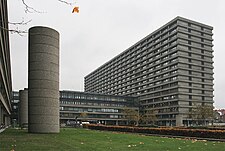
Frederick II was King of Denmark and Norway and Duke of Schleswig and Holstein from 1559 until his death.

The University of Copenhagen is a public research university in Copenhagen, Denmark. Founded in 1479, the University of Copenhagen is the second-oldest university in Scandinavia after Uppsala University.

Frederik X is King of Denmark. He acceded to the throne following his mother's abdication on 14 January 2024.

Mary is Queen of Denmark as the wife of King Frederik X.

Riget is a Danish absurdist supernatural horror miniseries trilogy created by Lars von Trier and Tómas Gislason. Set in the neurosurgical ward of Copenhagen's Rigshospitalet, each episode of the show takes place over a single day, and follows the hospital's eccentric staff and patients as they encounter bizarre and sometimes supernatural phenomena. The series is notable for its wry humor, its muted sepia colour scheme, and the appearance of a chorus of dishwashers with Down syndrome, who discuss in intimate detail the strange occurrences in the hospital. The main theme's song was written by von Trier himself.
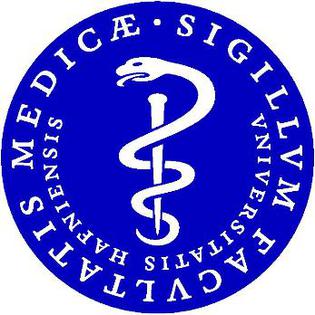
The Faculty of Health and Medical Sciences at the University of Copenhagen houses 13 departments, 31 centres, five schools, four hospitals, and three libraries.

Margrethe P. Rask, better known as Grethe Rask, was a Danish physician and surgeon in Zaïre. After setting up her own hospital in the village of Abumombazi in 1972, she transferred to Danish Red Cross Hospital in Kinshasa in 1975. She returned to Denmark in 1977 after developing symptoms of an unknown infectious disease, which was later discovered to be AIDS. Three and a half years later in June 1981 the Centers for Disease Control recognized AIDS. Rask was one of the first non-Africans and first woman known to have died of AIDS-related causes.

Count Felix of Monpezat is a member of the Danish royal family. He is the younger son of Prince Joachim and his first wife, Alexandra, Countess of Frederiksborg. He is a grandson of Queen Margrethe II and Prince Henrik, and a nephew of King Frederik X. Felix is currently seventh in the line of succession to the Danish throne.
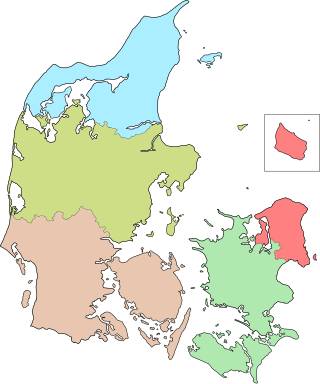
The five Regions of Denmark were created as administrative entities at a level above the municipalities and below the central government in the public sector as part of the 2007 Danish Municipal Reform, when the 13 counties (amter) were abolished. At the same time, the number of municipalities (kommuner) was cut from 270 to 98. The reform was approved and made into a law by the lawmakers in the Folketing 26 June 2005 with elections to the 98 municipalities and 5 regions being held Tuesday 15 November 2005.

The royal Frederiks Hospital was Denmark's first hospital in the present-day meaning of the word. It was founded by king Frederik V and financed by the earnings from the Norwegian Postal Service.
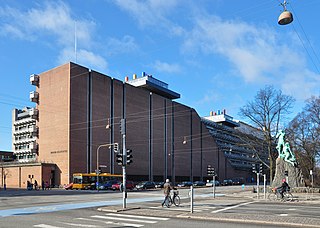
The Panum Building is a large building complex that is part of the University of Copenhagen's North Campus in Copenhagen, Denmark. It houses the Faculty of Health and Medical Sciences. This includes the Dental School and the Faculty of Medicine as well as The School of Oral Health Care and The School for Dental Technicians.
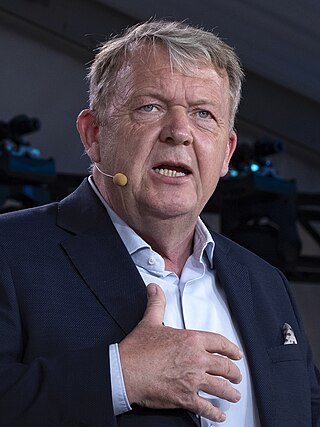
Lars Løkke Rasmussen is a Danish politician who has served as Minister of Foreign Affairs since 2022. He previously served as the 25th Prime Minister of Denmark from 2009 to 2011 and again from 2015 to 2019. He was the leader of the liberal Venstre party from 2009 to 2019.
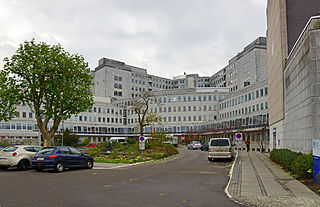
Rigshospitalet Glostrup is hospital located in the township of Glostrup, 8 km from the center of Copenhagen in Denmark. It is owned and managed by the regional health authority of the Greater Copenhagen region, Region Hovedstaden. The hospital was formerly known as Glostrup Hospital, but after the merger with Rigshospitalet 1/1/2015, it is now known as Rigshospitalet Glostrup.

Albert Gjedde: is a Danish-Canadian neuroscientist. He is Professor of Neurobiology and Pharmacology at the Faculty of Health Sciences and Center of Neuroscience at the University of Copenhagen. He is currently also Adjunct Professor of Neurology and Neurosurgery in the Department of Neurology, Montreal Neurological Institute, McGill University, Montreal, Quebec, Canada, Adjunct Professor of Radiology and Radiological Science in the Division of Nuclear Medicine, Department of Radiology and Radiological Science, Johns Hopkins University, Baltimore, Maryland, US, Adjunct Professor of Translational Neuropsychiatry Research, University of Southern Denmark, Odense, Denmark, and adjunct professor of psychiatry at Tabriz University of Medical Sciences, Tabriz, East Azerbadjan, Iran.

St. John's Church is a church located next to Sankt Hans Torv in the heart of the Nørrebro district of Copenhagen, Denmark. Opened in 1861, it was the first church to be built outside the city's old fortification ring when it was decommissioned and new residential neighbourhoods sprung up outside the former city gates.
Gitte Moos Knudsen is a Danish translational neurobiologist and clinical neurologist, and Clinical Professor and Chief Physician at the Department of Clinical Medicine, Neurology, Psychiatry and Sensory Sciences, at Copenhagen University Hospital. She graduated from Lyngby Statsskole, just north of Copenhagen, before gaining entrance to medicine, where she received her MD from University of Copenhagen in 1984, and became a Board certified user of radioisotopes in 1986. She sat the FMGEMS exam (US) in 1989. She became Board certified in neurology in 1994 and received her DMSc (Dr.Med.) from University of Copenhagen in 1994. She currently resides in Copenhagen, and is married to Tore Vulpius. She has 3 children.

Blegdamsvej is a street in Copenhagen, Denmark, connecting Sankt Hans Torv in Nørrebro to Trianglen in Østerbro. The busy artery Fredensgade separates the Nørrebro and Østerbro sections of the street from each other. The north side of the street is dominated by the Panum Building and Rigshospitalet, located on either side of Tagensvej.

Åboulevard is a street in central Copenhagen, Denmark. Together with H. C. Andersens Boulevard in the city centre and Borups Allé, it forms a major artery in and out of the city. The road is built over Ladegårds Å, a canal originally built to supply Copenhagen with water, which still runs in a pipe under it, feeding water into Peblinge Lake.
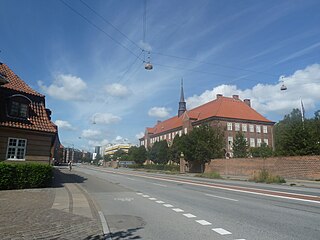
Tagensvej is a major street in the northwestern part of inner Copenhagen, Denmark. It runs from Blegdamsvej on the border between Nørrebro and Østerbro in the southeast to Frederiksborgvej and Bispebjerg Cemetery in the northwest.
The North Campus is one of the University of Copenhagen's four campuses in Copenhagen, Denmark. It is situated just north of the city centre, across from Copenhagen's largest park, Fælledparken, and between the Østerbro and Nørrebro districts. It is home to the Faculty of Science and the Faculty of Health and Medical Sciences.

